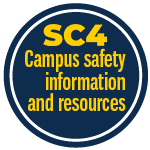I’m sure we have all heard the age-old saying, “If you don’t use it, you’ll lose it.” I am not sure that I have always believed that until now.
Now, you have some great tools we have uncovered this school year as they related to financial literacy. I believe if you aren’t practicing some of those tools then you will most likely lose them. Let’s take a recap of the year by highlighting 15 of the tools outlined in the blogs.
- Create a personal monthly budget. Your budget is the foundation of your financial health, and it’s easy to get started. Learn how to create a personal budget by looking at the previous TRIO blogs on budgeting.
- Start an emergency fund. Experts recommend setting aside at least three months’ worth of basic living expenses in case of an unexpected financial burden like a layoff or large medical expense.
- Spending money is/should be the perfect way to increase your overall value. Spending money should be a well-thought-out process, and the best way to remedy financial literacy is by budgeting.
- The five key components of financial literacy are earning, spending, saving, and investing, borrowing, and protecting. Credit is the ability to borrow money or access goods or services with the understanding that you’ll pay later.
- Two primary forms of credit — revolving credit and installment credit. Revolving credit usually is your credit card. The second form of credit is installment credit. Installment credit is a loan that you borrow one amount and repay it with interest in accrues in installments each month.
- Borrow is using something belonging to someone else to return it. “Loan” can be a noun, such as a sum of money that you must pay back with interest, or a verb, the act of lending something to someone.
- Put a serious plan into play and stick to it. There is nothing that is out of your reach. If you write out a solid plan and work it, then you will have it. Financial health is yours.
- Know your holiday triggers and combat them
- If you are to be financially literate, it is safe to say that you must know yourself well, bad habits and all, for they are just as telling as the good ones.
- Create a Financial Literacy Vision Board. Yes, let’s have a vision boarding party for our money. Statistically, we are 1.4 times more likely to accomplish our goals when we can picture them.
- Our attitudes, behaviors, and heart posture concerning money are major factors contributing to our relationship with our money.
- Look at decluttering, sweeping, dusting, and tossing a few items out in your finances.
- Scammers are real, and it is your job to protect yourself.
- Taxes can seem scary, but the best way to avoid any unnecessary stress regarding taxes is to plan and become informed.
As summer quickly approached please don’t forget the 15 tools, we gained this year and don’t forget to use them, even during the summer months. Keep at your budget and if you have space in your budget, save more. As always, I believe in you, happy summer, and let’s build!




